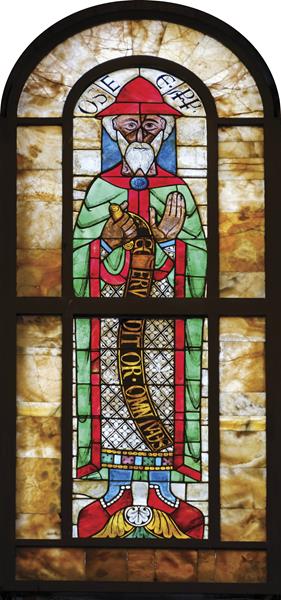Epistles: A Thousand Words: The Prophet Windows

Stained-glass windows adorn many churches. Although the art of making colored (or “stained”) glass had existed for millennia, originating in ancient Egypt, it reached a new level of sophistication in medieval Europe. As the demand for stained-glass windows to decorate churches increased, artisans experimented with techniques to produce glass with more colors and fewer impurities.
The cathedral in Augsburg, Germany, has some of the earliest stained-glass windows. Still intact and functional, five windows in the cathedral’s south clerestory date to the late 11th or early 12th century. Each features a prophet from the Old Testament: Moses, David, Jonah, Hosea, and Daniel. These portraits might have been part of a larger series, but only these five have survived.
Stained glass was created by mixing sand and ash or lime (the typical formula for glass) with metal oxides and heating everything to a high temperature.1 Adding cobalt made blue glass. Adding manganese made red and purple glass. To create a stained-glass window, a designer would first sketch an initial design in the actual size for the window. After the glassblowers had created the sheets of glass in the desired colors, artisans would cut the glass into the required shapes for the design. Sometimes painters would add details to the design with enamel, and those pieces of glass would be reheated to make the enamel fuse to them. Then the various pieces would be joined to each other with lead strips, and the final product would be set in an iron frame.
Already a library member? Log in here.
Institution user? Log in with your IP address.

